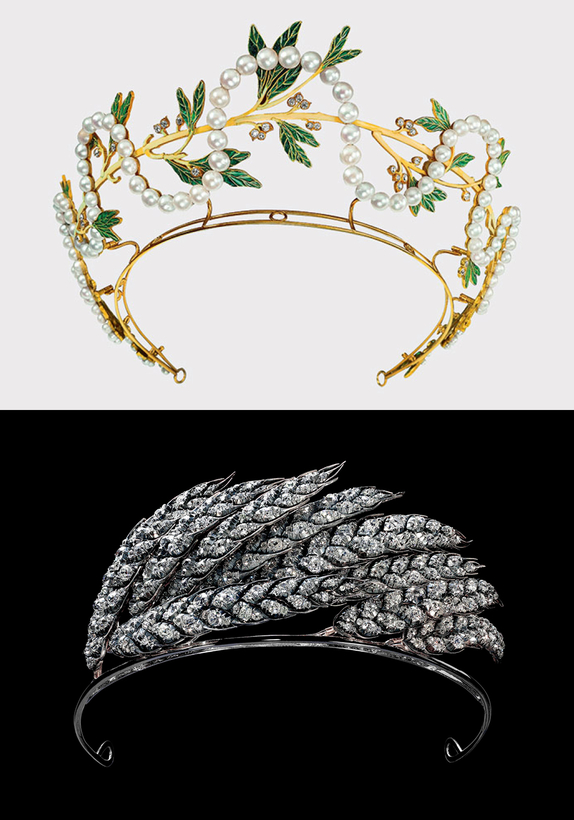“An extremely capacious handbag” is how Sir Roy Strong, former director of the Victoria & Albert Museum, described the London museum’s holdings. “City of Gold” is the nickname for Pforzheim, Germany, home of the Schmuckmuseum Pforzheim, the first public museum dedicated exclusively to jewelry. And the Musée des Arts Décoratifs (MAD) is in Paris, the city that waggish James Thurber deemed “a post-graduate course in Everything” and Ernest Hemingway called “a moveable feast.” For jewelry-besotted travelers heeding the call to culture, this trinity—the world’s three greatest permanent jewelry collections—offers a curated sanctuary of gems.
Combined holdings of some 8,000 gems and related works, from antiquity to the present, are reason enough for anyone to tour the permanent jewelry collections of the V&A and MAD, among the most comprehensive and superior in the world. There is no zooming through the V&A’s jewelry galleries; rather, it’s more of a zig and a zag from one jewelry-laden vitrine to another. Look for Etruscan Revival gold-and-enamel works by the hallowed firm of Castellani; ceremonial and royal regalia, diadems, and crowns; and not-to-be-missed works by the British upstarts of the 1960s, among them the undisputed leader, Andrew Grima, whose choice of stones and fresh ways of working gold earned him commissions from Queen Elizabeth and Princess Margaret.

In Paris, MAD puts jewelry on stylish display in its Galerie des Bijoux. Unsurprisingly, the French greats reign. Lalique, Vever, Falize, and others represent the free-form natural world of the Art Nouveau, circa 1900; two decades later the pendulum swings to modern Art Deco taste-makers such as Jean Després, Georges Fouquet, and Raymond Templier, each of whom found inspiration in urban life. And what would a French collection of jewelry be without the storied maisons Cartier, Van Cleef & Arpels, and Boucheron, all at MAD?
At the summit of the jewelry mountain, so to speak, is the Schmuckmuseum Pforzheim. The museum is a blockbuster, a Who’s Who of jewelry creators, from Suzanne Belperron to Gustav Fabergé to Björn Weckström. (Princess Leia wore one of his necklaces in the first Star Wars movie.) Greek and Etruscan antiquities abound, as do glories of the Baroque and Renaissance. A visit to Pforzheim is a visit to jewelry Nirvana.

Single-artist museums offer deep dives into a jeweler’s work, and the best of these include the Dalí Jewels permanent exhibition at the Dalí Theatre-Museum, in Figueres, Spain; the Lalique Museum, in Wingen-sur-Moder, France; and the Ilias Lalaounis Jewelry Museum, in Athens. For a finale, the bejeweled fireworks of the Grünes Gewölbe (the combined name for the Historic Green Vault and the New Green Vault), in the Dresden Royal Palace, offers important jewelry both as spectacle and provenance, including the Dresden Green Diamond, 41 carats of internally flawless beauty. This is jewelry as art.
For those mindful of ticking clocks, temporary exhibitions include Tiffany & Co.’s “Vision & Virtuosity,” at the Saatchi Gallery, London, through August 19; Chaumet’s “Végétal—L’École de la Beauté,” at the Beaux-Arts de Paris, through September 4; and “Engraved Gems,” 200 historic cameos and intaglios at the prestigious L’École, School of Jewelry Arts, the educational arm of Van Cleef & Arpels, Paris, through October 1. —Ruth Peltason
Ruth Peltason is a New York–based editor, writer, and jewelry authority


 Discover
Discover